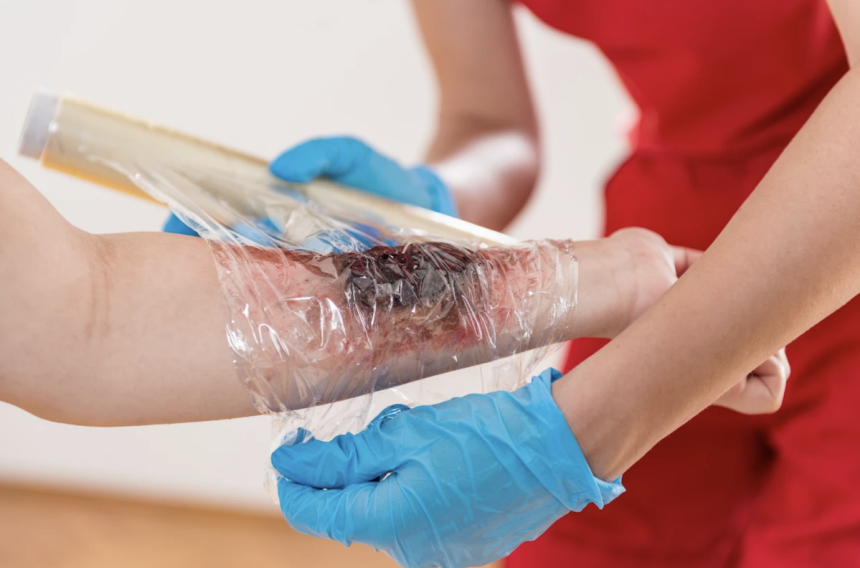Burn injuries in public transit accidents can result from fires, explosions, or exposure to harmful chemicals. These injuries range from minor burns to severe, life-threatening conditions requiring extensive medical care. Immediate and effective treatment is crucial to minimize damage, prevent complications, and promote recovery. For victims of public transit accidents, knowing the appropriate medical steps is essential, as the types and severity of burns can vary widely depending on the circumstances of the crash.
Public transportation accidents present unique risks due to the confined spaces and the potential for delayed evacuation during emergencies. Burn injuries often involve multiple layers of the skin and, in more severe cases, underlying tissues, bones, and organs.
Initial First Aid and Emergency Care
When a burn injury occurs in a public transit accident, immediate first aid is critical to prevent further damage. First-degree burns can often be treated on-site by cooling the area with water and covering it with a sterile bandage. For more severe burns, however, emergency responders must act quickly to stabilize the victim and reduce the risk of shock. Removing the person from the source of heat and covering the burn area to prevent infection are key steps in initial care.
In large or deep burns cases, emergency care may involve intravenous (IV) fluids to prevent dehydration and maintain blood pressure and pain relief to manage the intense discomfort often associated with burns. Victims should be transported to a hospital or specialized burn center as quickly as possible for further evaluation and treatment.
Treating First-Degree Burns
First-degree burns, which affect only the outer layer of the skin (the epidermis), are generally the least severe burn injury. These burns result in redness, pain, and swelling but usually heal within a few days with proper care. Treatment typically involves cooling the burn with water, applying aloe vera or over-the-counter burn ointments, and keeping the area clean to prevent infection.
While first-degree burns may not require intensive medical care, victims should still monitor the burn for any signs of complications, such as infection. If the burn covers a large area or is located in sensitive regions like the face or joints, medical consultation may be necessary to ensure proper healing and avoid scarring.
Addressing Second-Degree Burns
Second-degree burns penetrate the skin deeper, affecting the outer layer (epidermis) and the dermis, the second layer. These burns cause blistering, severe pain, and swelling. Treatment for second-degree burns involves more advanced medical care, including cleaning the wounds, applying antibiotic creams, and covering the burn with sterile dressings to reduce the risk of infection. In some cases, debridement, or removing dead skin, may be necessary to promote healing.
Victims of second-degree burns from public transit accidents may need to visit a burn specialist to ensure the injury is healing properly. Depending on the extent of the burn, recovery may take several weeks, and scarring is a common outcome. Physical therapy might also be recommended to maintain mobility in areas affected by the burn.
Managing Third-Degree Burns
Third-degree burns, also known as full-thickness burns, are severe injuries that penetrate all skin layers and can damage underlying tissues. They often appear charred or leathery, and the affected area may feel numb due to nerve damage. Prompt medical attention is vital for treating these burns, often requiring hospitalization, surgery, and skin grafts to restore the damaged skin.
Burn centers or specialized units are equipped to handle the extensive care required for third-degree burn victims. Patients may need multiple surgeries to repair the damage; recovery can take months or even years. Pain management, infection control, and wound care are crucial treatment components. Long-term physical therapy and psychological support are also vital to help victims regain function and cope with the emotional trauma of severe burn injuries.
Skin Grafting and Reconstruction Surgery
For more serious burn injuries, such as third- or fourth-degree burns, skin grafting is often necessary to promote healing. Skin grafts involve transplanting healthy skin from another body part to the burned area to replace the damaged tissue. There are two main types of skin grafts: split-thickness and full-thickness. The choice of graft depends on the size and depth of the burn.
Reconstruction surgery may also be required to improve the appearance and function of the affected area. This type of surgery helps address scarring, contractures (tightening of the skin), and loss of mobility. Both skin grafting and reconstruction surgery require careful post-operative care, including monitoring for signs of infection and ensuring the grafts take hold successfully.
Treating Inhalation Burns and Respiratory Damage
Burn injuries are not limited to the skin; in public transit accidents involving fires or explosions, victims may also suffer from inhalation burns caused by hot gases, smoke, or toxic fumes. These injuries can cause swelling in the airways and lungs, leading to respiratory distress or failure. Treatment for inhalation burns often involves providing oxygen therapy, administering medications to reduce swelling, and, in severe cases, intubation to assist with breathing.
Long-term care for inhalation burns may include pulmonary rehabilitation to help victims regain lung function. Early detection and treatment are critical, as inhalation burns can be life-threatening and are sometimes difficult to identify in the immediate aftermath of the accident.
Infection Prevention and Wound Care
Burn injuries, particularly severe ones, pose a significant risk of infection due to the exposure of open wounds to harmful bacteria. Here are some key practices in infection prevention and wound care:
- Use of antibiotic creams or ointments: To prevent bacterial infections, doctors often apply topical antibiotics to burn wounds.
- Sterile dressings: They cover the burn area, protecting it from further contamination.
- IV antibiotics for severe cases: In instances of more serious burns, intravenous antibiotics may be required to prevent or treat infections.
- Regular wound cleaning: Consistent cleaning of the burn wound is essential for preventing infections and removing dead tissue.
- Frequent dressing changes: Burn wounds require frequent dressing changes to keep the area clean and promote healing.
- Monitoring for complications: Careful observation for signs of infection or other complications is crucial during the healing process.
- Scar prevention: Proper wound care aids in infection control, minimizes scarring, and improves long-term outcomes.
Physical and Psychological Rehabilitation
Recovery from burn injuries involves more than just physical healing. Burn victims, especially those who suffer from severe or disfiguring burns, often require psychological support to cope with the emotional and mental impact of their injuries. Burn centers typically provide access to counselors and therapists who specialize in helping patients manage trauma, anxiety, and depression related to their injury. Legal support may also be necessary to help victims seek compensation for their suffering, and working with a trusted Nashville injury law firm can guide them in obtaining the necessary financial resources for recovery.
Physical rehabilitation is also an important part of the recovery process. Burn injuries, particularly those involving the limbs or joints, can result in a loss of mobility or flexibility. Physical therapy helps restore movement, reduce stiffness, and improve the overall function of the affected area. A comprehensive rehabilitation plan that addresses physical and emotional well-being is essential for a full recovery.
Lynn Martelli is an editor at Readability. She received her MFA in Creative Writing from Antioch University and has worked as an editor for over 10 years. Lynn has edited a wide variety of books, including fiction, non-fiction, memoirs, and more. In her free time, Lynn enjoys reading, writing, and spending time with her family and friends.















